Chlorography or Chlorotyping from the Decomposition of Chlorophyll and Natural Pigments in Leaves and Flowers as a Natural Alternative for Photographic Development
Abstract
1. Introduction
1.1. Theoretical Framework to Support Photographic Practice
1.2. Photochemical Principles of Chlorography
2. Materials and Methods
2.1. Chlorophyll Development Process
2.1.1. Leaf Selection
2.1.2. Image Preparation
2.1.3. Setup for Development
2.1.4. Exposure
2.1.5. Drying and Preservation
2.1.6. Environmental Parameter Monitoring and Measurement
3. Results
4. Discussion
4.1. Interpretation of Photographic Variability Between Species
4.2. Contextualizing Chlorography Versus Other Alternative Techniques
4.3. Chlorography as a Tool for Ethnobotany and Cultural Conservation
4.4. Technical Challenges in the Face of Ephemerality and Conservation
4.5. Limitations and Future Perspectives
5. Conclusions
Author Contributions
Funding
Data Availability Statement
Acknowledgments
Conflicts of Interest
References
- Larrea Solórzano, A. Sin triturar la pulpa: Prácticas de clorotipia con hojas de Tungurahua. Index Rev. De Arte Contemp. 2023, 9, 134–144. [Google Scholar] [CrossRef]
- MET–Department of Photographs. The Daguerreian Era and Early American Photography on Paper, 1839–1860. In Heilbrunn Timeline of Art History; The Metropolitan Museum of Art: New York, NY, USA, 2004. [Google Scholar]
- The New York Public Library. An Introduction to Photographic Processes; The New York Public Library: New York, NY, USA, 2013. [Google Scholar]
- Michaud, L. Alternative Process Photography: Beyond Digital and Film; Senior Honors Projects; University of Rhode Island: Kingston, RI, USA, 2017; p. 454. [Google Scholar]
- Danh, B. Binh Danh: The Enigma of Belonging; Radius Books: Santa Fe, NM, USA, 2023. [Google Scholar]
- Lingvay, M.; Akhtar, P.; Sebők-Nagy, K.; Páli, T.; Lambrev, P.H. Photobleaching of Chlorophyll in Light-Harvesting Complex II Increases in Lipid Environment. Front. Plant Sci. 2020, 11, 849. [Google Scholar] [CrossRef]
- Blones Borges, J.M.; Mora, A.J.; Giráldez De Luca, M.D. Potencialidad en fotosensibilidad foliar, para tres especies de plantas ornamentales, en la generación de imágenes, bajo la técnica fotográfica alternativa y experimental de la clorotipia. Rev. Crit. Con Cienc. 2024, 2, 39–52. [Google Scholar] [CrossRef]
- Torres Canela, O.; Gurieva, N. Fotografía impresa al natural: La clorotipia como procedimiento alternativo de impresión de imágenes en plantas. Zincografía 2024, 8, 15. [Google Scholar] [CrossRef]
- Hannavy, J. Encyclopedia of Nineteenth-Century Photography; Routledge: New York, NY, USA, 2008. [Google Scholar]
- Murillo, A. Analysis Of Light Exposure Time And Its Effect On Photosynthetic Pigment Chlorophyll A And Β Degradation. Res. J. Life Sci. Bioinform. Pharm. Chem. Sci. 2021, 7, 17–29. [Google Scholar]
- Cerón Martínez, C. Plantas medicinales de los Andes ecuatorianos. In Botánica Económica de los Andes Centrales; Universidad Mayor de San Andrés: La Paz, Bolivia, 2006. [Google Scholar]
- Zambrano-Intriago, L.; Buenaño-Allauca, M.; Mancera-Rodríguez, N.; Jiménez-Romero, E. Estudio etnobotánico de plantas medicinales utilizadas por los habitantes del área rural de la Parroquia San Carlos, Quevedo, Ecuador. Univ. Y Salud 2015, 17, 97–111. [Google Scholar]
- Kmet, A.; Drozdíková, A.; Nagyová, S.; Ikhardt, P. The cyanotype process and its potential in chemistry education. J. Chem. Educ. 2023, 100, 2367–2372. [Google Scholar] [CrossRef]
- Fabbri, M. Anthotype Emulsions, Volume 2: The collective research from photographers on World Anthotype Day 2023. In Anthotype Emulsions—The Collective Research from Photographers on World Anthotype Day; Alternative Photography: Micamera, Italy, 2023. [Google Scholar]
- Saska, H. Anna atkins: Photographs of british algae. Bull. Detroit Inst. Arts 2010, 84, 8–15. [Google Scholar] [CrossRef]
- Moreno-Saez, C.; Gutiérrez-Párraga, T.C. La cianotipia como medio de formación e implementación de actividades artísticas para educadores que trabajan con enfermos de Alzheimer. Arte Individuo Y Soc. 2017, 29, 109–126. [Google Scholar] [CrossRef]
- Wang, H.; Fan, Y.; Yang, Y.; Zhang, H.; Li, M.; Sun, P.; Zhang, X.; Xue, Z.; Jin, W. Classification of rose petal colors based on optical spectrum and pigment content analyses. Hortic. Environ. Biotechnol. 2023, 64, 153–166. [Google Scholar] [CrossRef]
- Martínez Girón, J.; Martínez, J.A.; García Hurtado, L.; Cuaran, J.; Ocampo, Y. Pigmentos vegetales y compuestos naturales aplicados en productos cárnicos como colorantes y/o antioxidantes: Revisión. Inventum 2016, 11, 51–62. [Google Scholar] [CrossRef]
- Schelbert, S.; Aubry, S.; Burla, B.; Agne, B.; Kessler, F.; Krupinska, K.; Hortensteiner, S. Pheophytin Pheophorbide Hydrolase (Pheophytinase) Is Involved in Chlorophyll Breakdown during Leaf Senescence in Arabidopsis. Plant Cell 2009, 21, 767–785. [Google Scholar] [CrossRef] [PubMed]
- Frank, H.; Cogdell, R. Carotenoids in Photosynthesis. Photochem. Photobiol. 1996, 63, 257–264. [Google Scholar] [CrossRef]
- Castañeda-Ovando, A.; Pacheco-Hernández, M.; Páez-Hernández, M.; Rodríguez, J.; Galán-Vidal, C. Chemical studies of anthocyanins: A review. Food Chem. 2009, 113, 859–871. [Google Scholar] [CrossRef]
- Strack, D.; Vogt, T.; Schliemann, W. Recent advances in betalain research. Phytochemistry 2003, 62, 247–269. [Google Scholar] [CrossRef]
- Khanbabaee, K.; van Ree, T. Tannins: Classification and Definition. Nat. Prod. Rep. 2001, 18, 641–649. [Google Scholar]
- Falcão, L.; Araújo, M. Tannins characterization in historic leathers by complementary analytical techniques ATR-FTIR, UV-Vis and chemical tests. J. Cult. Herit. 2013, 14, 499–508. [Google Scholar] [CrossRef]
- Pizzicato, B.; Pacifico, S.; Cayuela, D.; Mijas, G.; Riba-Moliner, M. Advancements in Sustainable Natural Dyes for Textile Applications: A Review. Molecules 2023, 28, 5954. [Google Scholar] [CrossRef] [PubMed]
- Danila, A.; Muresan, E.; Chirila, L.; Coroblea, M. Natural Dyes Used in Textiles: A Review. In International Symposium “Technical Textiles—Present and Future”., 2021 ed; Sciendo: Warsaw, Poland, 2021. [Google Scholar]
- Barber, J.; Andersson, B. Too much of a good thing: Light can be bad for photosynthesis. Trends Biochem. Sci. 1992, 17, 61–66. [Google Scholar] [CrossRef]
- Petrović, S.; Zvezdanović, J.; Marković, D. Chlorophyll degradation in aqueous mediums induced by light and UV-B irradiation: An UHPLC-ESI-MS study. Radiat. Phys. Chem. 2017, 141, 8–16. [Google Scholar] [CrossRef]
- Verduin, J.; den Uijl, M.; Peters, R.; van Bommel, M. Photodegradation Products and their Analysis in Food. J. Food Sci. Nutr. 2020, 6, 67. [Google Scholar] [CrossRef]
- Murakami, A.; Kim, E.; Minagawa, J.; Takizawa, K. How much heat does non-photochemical quenching produce? Front. Plant Sci. 2024, 15, 1367795. [Google Scholar] [CrossRef] [PubMed]
- Ruban, A.V. Nonphotochemical Chlorophyll Fluorescence Quenching: Mechanism and Effectiveness in Protecting Plants from Photodamage. Plant Physiol. 2016, 170, 1903–1916. [Google Scholar] [CrossRef] [PubMed]
- Zaks, J.; Amarnath, K.; Kramer, D.; Niyogi, K.; Fleming, G. A kinetic model of rapidly reversible nonphotochemical quenching. Proc. Natl. Acad. Sci. USA 2012, 109, 15757–15762. [Google Scholar] [CrossRef]
- Foundation, P. Anthotypes & Other Organic Processes I. Available online: https://www.penumbrafoundation.org/anthotypes-other-organic-processes-i (accessed on 15 February 2025).
- Waveform Lighting. Understanding UV-A Irradiance, and Requirements for Various Applications. Available online: https://www.waveformlighting.com/tech/understanding-uv-irradiance-and-requirements-for-various-applications (accessed on 16 March 2025).
- Both, A.J.; Benjamin, L.; Franklin, J.; Holroyd, G.; Incoll, L.D.; Lefsrud, M.G.; Pitkin, G. Guidelines for measuring and reporting environmental parameters for experiments in greenhouses. Plant Methods 2015, 11, 43. [Google Scholar] [CrossRef] [PubMed]
- Linköping University. The Eco- and Bioart Lab. Available online: https://liu.se/en/research/the-eco-and-bioart-lab (accessed on 15 February 2025).
- Zhang, L.; Shen, T. Integrating Sustainability into Contemporary Art and Design: An Interdisciplinary Approach. Sustainability 2024, 16, 6539. [Google Scholar] [CrossRef]
- Puljar D’Alessio, S. Dynamic Relations between Plants and Humans at the Intersection of Art, the Humanities, and Botanical Sciences: Four Instances of Contemporary Art in Croatia. Nar. Umjet. Hrvat. Časopis Za Etnol. I Folk. 2024, 61, 2. [Google Scholar] [CrossRef]
- Lu, D.; Zhang, Y.; Zhang, A.; Lu, C. Non-Photochemical Quenching: From Light Perception to Photoprotective Gene Expression. Int. J. Mol. Sci. 2022, 23, 687. [Google Scholar] [CrossRef]
- Zhao, X.; Chen, T.; Feng, B.; Zhang, C.; Peng, S.; Zhang, X.; Fu, G.; Tao, L. Non-photochemical Quenching Plays a Key Role in Light Acclimation of Rice Plants Differing in Leaf Color. Front. Plant Sci. 2017, 7, 1968. [Google Scholar] [CrossRef] [PubMed]
- Lambrev, P.; Miloslavina, Y.; Jahns, P.; Holzwarth, A. On the relationship between non-photochemical quenching and photoprotection of Photosystem II. Biochim. Biophys. Acta (BBA) Bioenerg. 2012, 1817, 760–769. [Google Scholar] [CrossRef]
- Zuluaga, A. Antotipias e impresiones de clorofila: Capturando la esencia fotosensible de las plantas a través del revelado solar. Folios Rev. De La Fac. De Comun. Y Filol. 2023, 47–48, 92–99. [Google Scholar]
- Arnold, E. Photography, composition, and the ephemeral city. Area 2021, 53, 659–670. [Google Scholar] [CrossRef]
- Som, S. Ephemeral Art-Impermanence in Material and Concept in the Work of Indian Contemporary Artists; National Institute of Fashion Technlolgy: New Delhi, India, 2020. [Google Scholar]
- Hornbeck, S. Intersecting conservation approaches to ethnographic and contemporary art: Ephemeral art at the National Museum of African Art. Objects Spec. Group Postprints 2013, 20, 207–226. [Google Scholar]
- Woods, A. A Method of Preserving the Green Color of Plants for Exhibition Purposes. Bot. Gaz. 1897, 24, 206–209. [Google Scholar] [CrossRef]
- Higdon, J.; Kopec, R. Linus Pauling Institute. 2004. Available online: https://lpi.oregonstate.edu/mic/dietary-factors/phytochemicals/chlorophyll-metallo-chlorophyll-derivatives (accessed on 20 July 2025).
- Phillips, M. The Effects of Aqueous Immersion Wash Treatments on Platinum Photographs. Top. Photogr. Preserv. 2001, 9, 103–114. [Google Scholar]


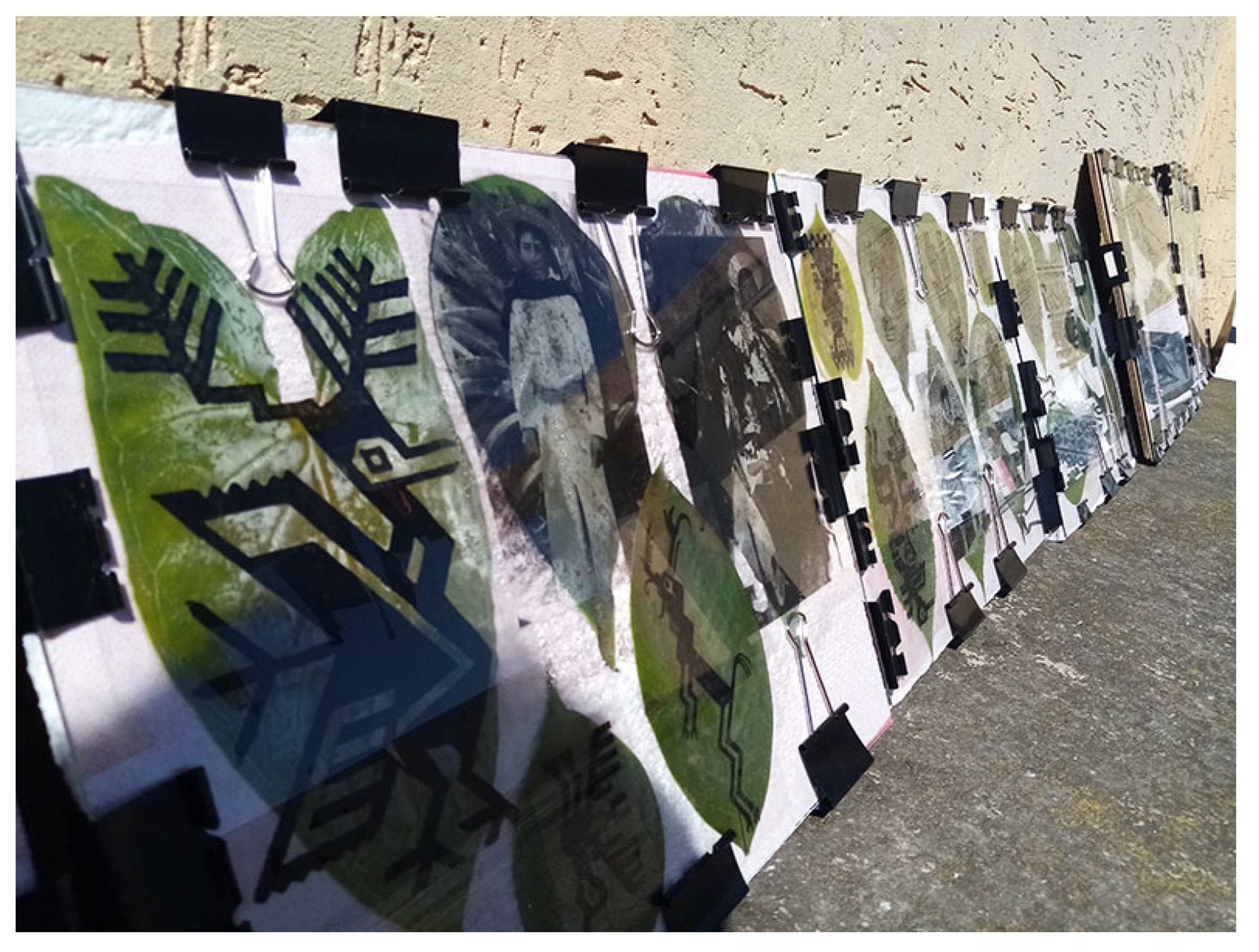


| Pigment Class | Characteristic Color | Principal Absorption Range | Primary Functions in Plants | Relevance in Natural Photography |
|---|---|---|---|---|
| Chlorophylls | Green | Blue, Red | Light absorption for photosynthesis. | Primary pigment in chlorophyll printing (chlorotypes). |
| Carotenoids | Yellow, Orange, Red | Blue-Green, Blue | Accessory pigments in photosynthesis, photoprotection (dissipation of excess energy). | Present in leaves (revealed upon chlorophyll degradation), extracted for anthotypes. |
| Anthocyanins | Red, Purple, Blue | Green, Blue-Green, Blue | Pollinator attraction, UV protection, defense, signaling. Color is pH-sensitive. | Extracted for anthotypes (wide range of colors, pH sensitivity). |
| Flavonoids | Yellow, Other | UV, Blue (some) | UV protection, signaling, defense. | Contribute to the color and properties of some anthotype emulsions. |
| Betalains | Red, Yellow | Blue, Green | Coloration, defense. | Extracted for anthotypes (source of pigments in some plants). |
| Tannins | Brown | UV | Astringency, defense. | Used as mordants in botanical contact printing, can be light-sensitive. |
| Plant Species (Common Name) | Exposure Duration (h) | Average UV Irradiance (W/m2) | Average Temperature (°C) | Average Relative Humidity (%) |
|---|---|---|---|---|
| Granadilla (Passiflora ligularis) | 3–12 | 35.5 | 21.5 | 55 |
| Higo (Ficus carica) | 24 | 34.8 | 20.8 | 58 |
| Costilla de Adán (Monstera deliciosa) | 40–80 | 32.1 | 19.5 | 62 |
| Granadilla (Passiflora ligularis) | 3–12 | 35.5 | 21.5 | 55 |
| Preservation Method | Process Description | Primary Purpose |
|---|---|---|
| Resin Encapsulation (Epoxy) | The dry, imaged leaf is completely submerged in liquid epoxy resin, which then cures to form a solid, transparent block. | Physical protection and arresting degradation from light/oxygen. |
| Chemical Baths (Copper Sulfate) | The leaf is submerged in a dilute solution of copper sulfate or other chemical fixatives in an attempt to stabilize the chlorophyll and other pigments. | To deactivate chlorophyll, halt enzymatic reactions, or replace ions (e.g., Mg with Cu). |
| Application of Sealants (Wax, Varnish) | A thin layer of beeswax, microcrystalline wax, or a UV-filtering spray varnish is applied to the surface of the dry leaf. | To physically protect the surface and block UV light. |
| Pressing and Storage in Darkness | The leaf is carefully pressed between blotting paper to remove all moisture and is then stored in an acid-free environment in complete darkness. | To stabilize the image in a more environmentally friendly manner. |
| No. | Plant Description | Scientific and Common Name (Spanish) | Developed Image | Approximate Exposure Time |
|---|---|---|---|---|
| 1 | Passiflora ligularis, or sweet granadilla, is part of the Passifloraceae family. The plant is a vine and is native to the Andes of northwestern South America. | Passiflora ligularis/Granadilla |  | Depending on the age of the leaf, between 3 and 12 h. |
| 2 | Curuba or taxo are species of the Passifloraceae family. They are climbing plants or vines, native to the Andean regions of South America. | Curuba/Taxo | 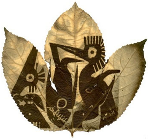 | 8 h |
| 3 | A shrub-like plant belonging to the Solanaceae family, native to the Andes. | Solanum quitoense/Naranjilla |  | 16 h (two days of sun exposure) |
| 4 | Known as squash or pumpkin, it is an annual herbaceous plant of the Cucurbitaceae family. It is a creeping or climbing plant with long stems. | Cucurbita maxima/Zapallo |  | 4 h |
| 5 | Vasconcellea pubescens, also known as mountain papaya, papayuela, or chamburo, is an evergreen shrub or small tree belonging to the Caricaceae family. | Vasconcellea pubescens/Jigacho | 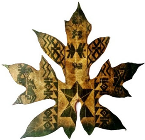 | 16 h (two days of sun exposure) |
| 6 | An annual herbaceous plant belonging to the legume family (Fabaceae). | Phaseolus vulgaris/Fréjol | 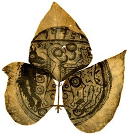 | Between 6 and 8 h |
| 7 | Ficus carica, commonly called the fig tree, is a tree or shrub of the Moraceae family, which produces the fruit known as the fig. | Ficus carica/Higo | 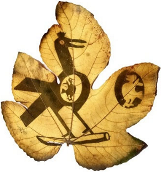 | 24 h (three days of sun exposure) |
| 8 | Eucalyptus camaldulensis is a tree of the genus Eucalyptus. It is a species planted in many parts of the world. | Eucalyptus/Eucalipto rojo |  | Between 8 and 10 h |
| 9 | The parrot’s beak heliconia belongs to a genus that includes more than 100 species of tropical plants, native to South America, Central America, and Indonesia. | Heliconia rostrata/Platanillo |  | Between 8 and 10 h |
| 10 | Also known as “Elephant Ear”, it is a perennial herbaceous plant of the Araceae family. Its leaves are large and heart-shaped, and its stems are blackish-purple. | Colocasia fontanesii Schott/Araceae—oreja de elefante | 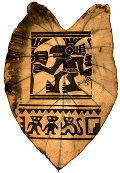 | 6 h |
| 11 | Calla lilies are perennial rhizomatous herbaceous plants of the Araceae family, known as arum lily, water lily, or calla lily. | Zantedeschia aethiopica/Cala |  | 8 h |
| 12 | An ornamental perennial plant belonging to the genus Pelargonium and the Geraniaceae family. It is a perennial, shrubby, or succulent plant with showy flowers. | Geranium/Geranio |  | 4 h |
| 13 | A perennial and woody climbing plant belonging to the Araliaceae family. It is known for its ability to climb using adventitious roots that allow it to adhere to various supports. | Hedera helix/Hiedra |  | 16 h (two days of sun exposure) |
| 14 | A shrub of the mallow family (Malvaceae). It is an evergreen plant that can reach up to 5 m in height. | Hibiscus/Cucarda | 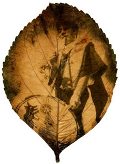 | 8 h |
| 15 | A tree species belonging to the Euphorbiaceae family, famous for its latex known as dragon’s blood, which has extraordinary healing properties. | Croton urucurana Baillon/Sangre de dragón |  | Between 4 and 6 h |
| 16 | A climbing plant of the Solanaceae family, characterized by its large, yellow, trumpet-shaped flowers. | Solandra grandiflora/Copa de oro |  | 8 h |
| 17 | A tropical, climbing plant of the Araceae family, belonging to the species Monstera deliciosa. | Monstera/Costilla de Adán |  | Between 40 and 80 h (five to ten days of sun exposure) |
| 18 | Commonly known as achocha or caigua, it is an annual herbaceous climbing plant of the Cucurbitaceae family. | Cyclanthera pedata/Achocha |  | Between 4 and 6 h |
| 19 | A perennial climbing plant belonging to the Asteraceae family. | Delairea odorata/Hiedra amarilla |  | 16 h (two days of sun exposure) |
| 20 | A tree belonging to the genus Micropholis and the Sapotaceae family. It is a plant endemic to Brazil. | Micropholis crotonoides/Pierre |  | Between 40 and 80 h (five to ten days of sun exposure) |
| 21 | A shrub-like plant of the Melastomataceae family, also called the glory bush. | Pleroma urvilleanum/Sietecueros Nazareno Brasileño |  | Between 24 and 40 h (three to five days of sun exposure) |
| 22 | A plant of the Polypodiaceae family. It is an epiphytic fern. | Phlebodium decumanum/Helecho | 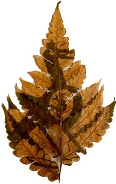 | Between 6 and 10 h |
| 23 | A shrub of the genus Nicotiana, the same genus as tobacco, from the Solanaceae family. | Nicotiana glauca/Palán palán |  | Between 6 and 10 h |
| 24 | A plant species belonging to the Acanthaceae family. | Acanthus mollis/Acanto | 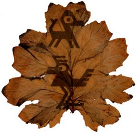 | 16 h (two days of sun exposure) |
| 25 | A slow-growing perennial palm belonging to the Arecaceae family. | Licuala grandis/Palma de abanico |  | Between 24 and 40 h (three to five days of sun exposure) |
| 26 | A perennial herbaceous plant of the genus Begonia. | Begonia sericoneura/Begonia | 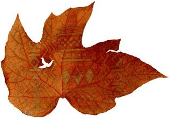 | Between 8 and 10 h |
| 27 | An epiphytic herbaceous plant of the Gesneriaceae family. It belongs to the genus Columnea. | Columnea medicinalis/Punta de flecha |  | Between 8 and 10 h |
| 28 | A deciduous tree of the genus Tilia, belonging to the mallow family (Malvaceae). | Tilia europaea/Tilo | 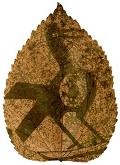 | Between 6 and 8 h |
| 29 | A perennial herbaceous plant with wide, lobed leaves. | Malva sylvestris/Malva |  | Between 12 and 16 h (one to two days of sun exposure) |
| 30 | Flower petal. The genus Rosa is composed of a well-known group of generally thorny and flowering shrubs, primary representatives of the rose family (Rosaceae). | Rosa grandiflora/Rosa | 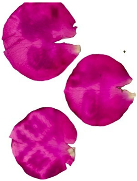 | 8 h |
Disclaimer/Publisher’s Note: The statements, opinions and data contained in all publications are solely those of the individual author(s) and contributor(s) and not of MDPI and/or the editor(s). MDPI and/or the editor(s) disclaim responsibility for any injury to people or property resulting from any ideas, methods, instructions or products referred to in the content. |
© 2025 by the authors. Licensee MDPI, Basel, Switzerland. This article is an open access article distributed under the terms and conditions of the Creative Commons Attribution (CC BY) license (https://creativecommons.org/licenses/by/4.0/).
Share and Cite
Larrea Solórzano, A.D.; Álvarez Lizano, I.P.; Morales Fiallos, P.R.; Maldonado Cherrez, C.E.; Suárez Naranjo, C.S. Chlorography or Chlorotyping from the Decomposition of Chlorophyll and Natural Pigments in Leaves and Flowers as a Natural Alternative for Photographic Development. J. Zool. Bot. Gard. 2025, 6, 41. https://doi.org/10.3390/jzbg6030041
Larrea Solórzano AD, Álvarez Lizano IP, Morales Fiallos PR, Maldonado Cherrez CE, Suárez Naranjo CS. Chlorography or Chlorotyping from the Decomposition of Chlorophyll and Natural Pigments in Leaves and Flowers as a Natural Alternative for Photographic Development. Journal of Zoological and Botanical Gardens. 2025; 6(3):41. https://doi.org/10.3390/jzbg6030041
Chicago/Turabian StyleLarrea Solórzano, Andrea D., Iván P. Álvarez Lizano, Pablo R. Morales Fiallos, Carolina E. Maldonado Cherrez, and Carlos S. Suárez Naranjo. 2025. "Chlorography or Chlorotyping from the Decomposition of Chlorophyll and Natural Pigments in Leaves and Flowers as a Natural Alternative for Photographic Development" Journal of Zoological and Botanical Gardens 6, no. 3: 41. https://doi.org/10.3390/jzbg6030041
APA StyleLarrea Solórzano, A. D., Álvarez Lizano, I. P., Morales Fiallos, P. R., Maldonado Cherrez, C. E., & Suárez Naranjo, C. S. (2025). Chlorography or Chlorotyping from the Decomposition of Chlorophyll and Natural Pigments in Leaves and Flowers as a Natural Alternative for Photographic Development. Journal of Zoological and Botanical Gardens, 6(3), 41. https://doi.org/10.3390/jzbg6030041







